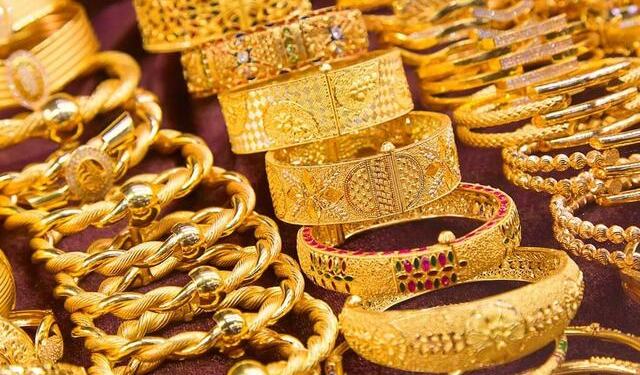 * Geopolitical tensions rise after Pentagon news on Iran
* Geopolitical tensions rise after Pentagon news on Iran
* Worries over U.S. “fiscal cliff” support gold
* China seen surpassing India as top gold consumer
By Josephine Mason and David Brough
NEW YORK/LONDON, Nov 8 (Reuters) – Gold rose to three-week highs on Thursday as investors continued to bet on easier U.S. fiscal policy following President Obama’s victory, and prices also got a bounce from fears about increased tensions between the United States and Iran.
Prices extended gains in afternoon trade, jumping just over $10 to $1,734 ounce – their highest level since Oct. 19 – after the Pentagon said Iran fired on a U.S. unmanned, unarmed surveillance drone on Nov. 1.
Safe-haven buying held prices up even though there appeared to be little cause for immediate concern. The authorities said the incident took place over a week ago, with the craft undamaged and returned safely to its base.
“Something popped after the Pentagon confirmed Iran shot on a drone last week,” said a New York-based broker.
Spot gold was at $1,731.61 an ounce by 4:23 p.m. EST (2123 GMT), up $15.30. After four days of gains, the market was on track for its biggest weekly rise since the end of August.
U.S. gold futures for December delivery settled up $12, or 0.70 percent, at $1,726 an ounce.
Earlier in the day, expectations that four more years of a Democrat in the White House would contribute to an extension of the Federal Reserve’s easy monetary policy continued to provide upward momentum.
“This is the longs coming back because of the continued perception that easier money will be in place,” said Frank McGhee, head metals trader of Integrated Brokerage Services LLC.
Worries about the “fiscal cliff” provided support for safe-haven gold, even as a strong dollar offset upward pressure on prices by making it more expensive for buyers holding other currencies.
Europe’s crisis moved back into the spotlight, with the euro falling to a two-month low against the dollar after the European Central Bank held interest rates at a record low and said the euro zone’s economy showed little sign of recovering before year-end.
In the longer term, traders said gold is likely to benefit from uncertainty over the looming “fiscal cliff” when nearly $600 billion worth of spending cuts and tax increases kick in with the risk of pushing the U.S. economy into deep recession.
“We will continue with support around $1,700 and $1,680, but before the end of the year, gold should gradually rise because we have liquidity (quantitative easing), and low yields,” said Andrey Kryuchenkov, analyst with VTB Capital.
INDIAN DEMAND HURT BY HIGH PRICES
Signs emerged though that high prices may hurt demand, with gold importers in India, the world’s biggest buyer, holding off buying even as the country’s festival season approaches its peak next week with Diwali.
China may help to offset weakness in consumption over the Indian wedding season, which typically the strongest time of year for gold purchases.
China’s gold demand is expected to grow 1 percent this year to a record of around 860 tonnes, overtaking India as the world’s biggest consumer of gold for the first time on a yearly basis, the global head of metals at consultancy Thomson Reuters GFMS said on Thursday.
“China will overtake India … both in overall demand terms and as the world’s largest jewellery market,” he told the online Reuters Global Gold Forum.
Spot platinum was down 0.15 percent at $1,541.25 and spot palladium was up 0.41 percent to $611.97.
Silver rose 1.83 percent to $32.34 an ounce.
Source: Reuters




























